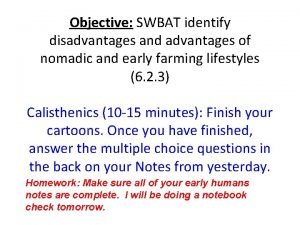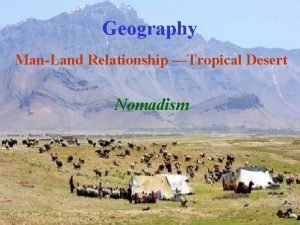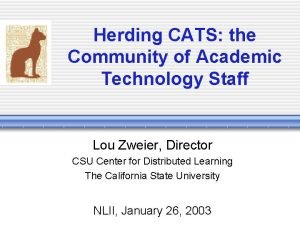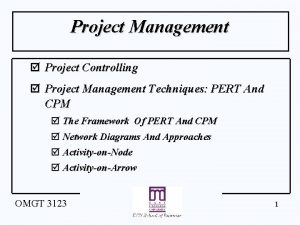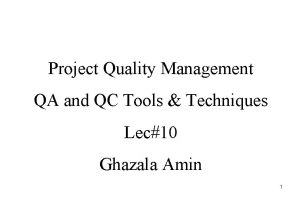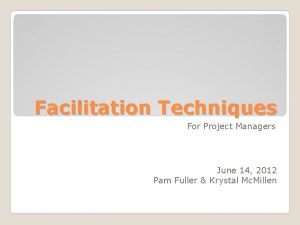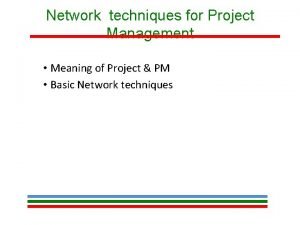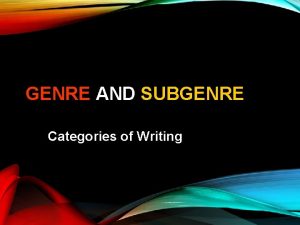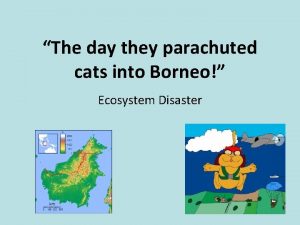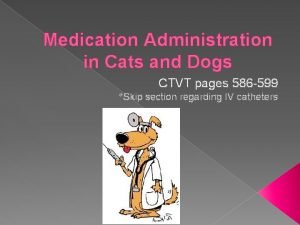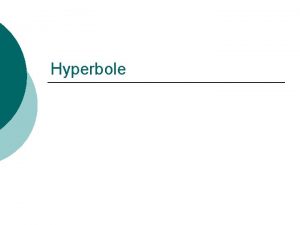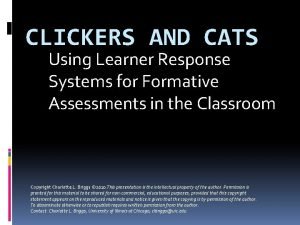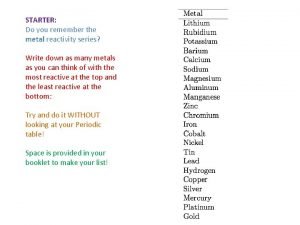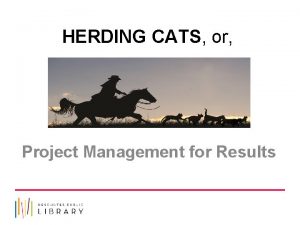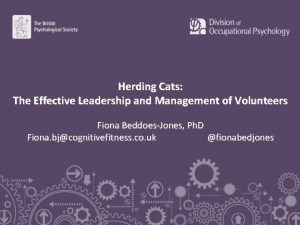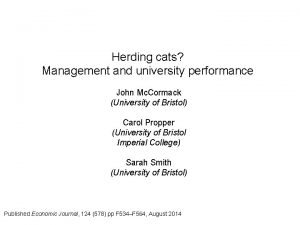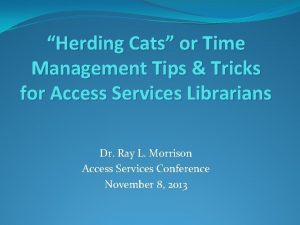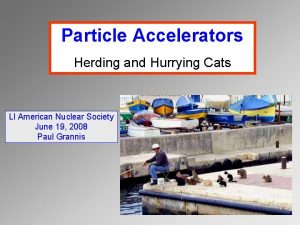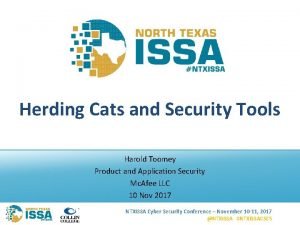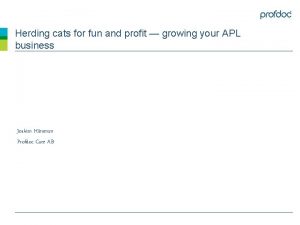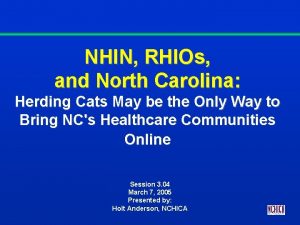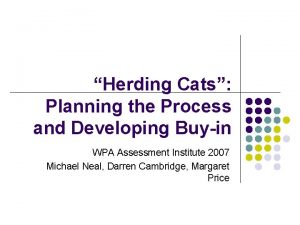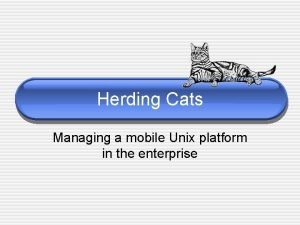Herding Cats Project and Task Management Techniques for


















- Slides: 18

Herding Cats Project and Task Management Techniques for Student Affairs Sarah Rocker and Kitty Jones, Summer 2011


Project Management • A systematic process used to initiate, plan, execute and evaluate projects in order to meet defined objectives. • Part Science - in the systematic process and tools • Part Art - in how one executes tasks and works with other people - Author Rita Mulcahy, 2006

Project Management Objectives: • Define the project • Reduce project to a set of manageable tasks • Obtain appropriate and necessary resources • Build a team or teams to perform the work • Plan and allocate resources to tasks • Monitor and manage the work • Report progress to coworkers, supervisor, or project team mates • Close down project when completed • Review and evaluate for lessons learned

What is a Project? A project has: • A beginning and an end • A defined purpose with a product or deliverables • Requires resources such as time and funding • Elements of uncertainty (risk)

Examples of Projects • The development and introduction of new services • Creating improvements to an existing process • The production of a newsletter or website • Others?

How is a project different than other work? • A continuous process is not a project. The development of a new policy is a project, but the day to day operation of that policy is not. • Continuous processes are usually managed by individuals or departments, not project managers or project team.

How is Project Management Relevant to Student Affairs? Techniques from PM are most relevant for those who have a specific job or project that includes the following: • A defined goal • Time, cost and quality constraints • Requires expertise and support from other areas • Involves a unique scope of work

Project Management Methodology Project Phases for Student Affairs: 1. Conceptualization 2. Planning and Preparation 3. Implementation 4. Assessment http: //www. mittechnical. com

Project Phases in Student Affairs • Conceptualization – identifying the need for and scope of the project. • Planning and Preparation – involves creating the project outline, addressing feasibility and procuring resources and identifying team members and stakeholders • Implementation – is the execution of the project. Observe progress and respond to changes as they occur • Assessment – Close the project, review what worked and what didn’t. Note learnings and changes for the future. Share information with others.

Roles of a Project Manager • Gains approval for the project aim • Selects and leads the team and setting individual objectives • Ensures a feasibility study is complete • Ensures that the project is planned in appropriate detail • Allocates and monitors the work and cost • Motivates the team • Reports progress back to the team or organization • Helps the team to solve problems that may arise in the project • Ensures that the team is successful in attaining it’s goal • Closes down and reviews the project

Tools and Techniques • Objective Setting This ensures that the project objectives can be measured and verified • Brain Storming Technique used at all stages, which encourages creative thinking and problem solving • Work Breakdown Structures Involves identifying key elements and breaking them down in to component parts until all manageable work packages/tasks have been identified. Once these have been identified they can be allocated to individual team members. • Gantt Charts Are used to show the schedule and sequencing of a projects. They include start and finish dates for specific tasks or milestones within a project.

Work Breakdown Structure Hiring new staff The Position 1. 1 The Candidates 1. 2 Authorization to hire 1. 1. 1 Recruiting 1. 2. 1 The Process 1. 3 Evaluating 1. 2. 2 Selection and Closure 1. 3. 2 Interviews 1. 3. 1 Job Description 1. 1. 2 Create Announcement 1. 2. 1. 1 Determine essential vs. desirable criteria 1. 2. 2. 1 Schedule with Committee 1. 3. 1. 1 Committee makes Recommendation 1. 3. 2. 1 Search Committee 1. 1. 3 Post Announcement 1. 2 Create interview questions 1. 2. 2. 2 Schedule with Candidates 1. 3. 1. 2 HR approval 1. 3. 2. 2 Assess diversity and depth of pool 1. 2. 2. 3 Conduct Interviews 1. 3 Hiring authority makes offer 1. 3. 2. 3 Getting HR’s OK to proceed 1. 1. 4 Screen applications, create shortlist 1. 2. 2. 4

The Element of Time: Gantt Charts Microsoft Outlook Microsoft Excel

Group Project Choose a project that you or someone in your group is planning. Identify the following elements and create a work breakdown structure for that project. 1. The overall aim and scope of the project and the benefit of doing it 2. Key objectives (include specific deliverables) 3. Resources available vs. needed 4. Key people (team, stakeholders, etc. ) 5. Timeline and Milestones

Group Report Back • Which parts of the process were the most beneficial? The most challenging? • Were there any aspects of your project/department don’t jive with this model?

Processes vs. Projects • Tools and techniques useful in both: objective setting, brainstorming, Work Breakdown Structure • Key elements to periodically review: – Scope (any “scope creep”? ) – Resources (looking ahead for changes in needs or availability) – People (do we have the right mix of people on our team? Any changes in stakeholders? Are we communicating effectively with both groups? ) – Assessment (are we regularly checking to make sure our activities are moving us toward our goals? )

Resources Creating Gantt Charts in Excel: Video: http: //www. youtube. com/watch? v=CW_w. GSFav. Tc Article: http: //office. microsoft. com/en-us/excel-help/create-a-gantt-chartin-excel-HA 001034605. aspx Template: http: //office. microsoft. com/en-us/templates/excel-gantt-chart. TC 030000350. aspx Work Breakdown Structure Programs and Resources: http: //freemind. sourceforge. net/wiki/index. php/Main_Page http: //www. mind 42. com/
 Herding cats project management
Herding cats project management Advantages and disadvantages of nomadic farming
Advantages and disadvantages of nomadic farming Nomadic herding definition ap human geography
Nomadic herding definition ap human geography Staff of herding
Staff of herding Introduction to software project management
Introduction to software project management Pert metoda
Pert metoda Qa tools and techniques
Qa tools and techniques Tiered task bias task
Tiered task bias task Risk mitigation techniques in project management
Risk mitigation techniques in project management Facilitation techniques in project management
Facilitation techniques in project management Meaning
Meaning Personification meaning figure of speech
Personification meaning figure of speech Dogs and cats by bob brady literary genre
Dogs and cats by bob brady literary genre Cats of borneo order of events
Cats of borneo order of events The day they parachuted cats into borneo food web
The day they parachuted cats into borneo food web Epaxial muscle injection dog
Epaxial muscle injection dog Example of figure of speech hyperbole
Example of figure of speech hyperbole Learner response systems
Learner response systems Ways to remember the reactivity series
Ways to remember the reactivity series

